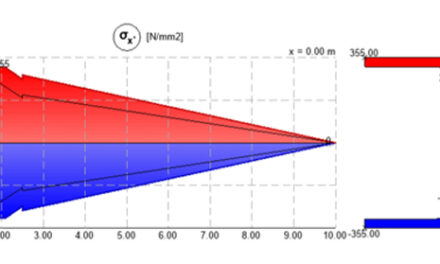
Carefully thought-through device design makes handling easier in the field
Nuremberg, Germany. Ensuring service engineers can handle the components they encounter in the field to the best of their ability and carry out their work with optimum efficiency requires professional design management. This user-friendly design of devices such as controllers or network components assumes a team has experience in design, use and production as well as a step-by-step development process.
 At Siemens, the design process is linked to product management, development and design at an early stage. And the results justify this process: Apart from having satisfied customers, Siemens is also pleased to have received many design awards on a regular basis such as the Red Dot Award. It all starts with a detailed briefing: How will the customer use the device, what are its most important features? From this, the Siemens team assesses the initial design proposals using digital models or 3D-printed prototypes. An example of a particularly service-friendly device is the Scalance XP-200 switch family. Industrial-grade and with high IP65 protection, these switches are also intended for spacesaving installation outside a control cabinet. An enclosure concept only a few centimeters deep was devised for this design with angled connectors to keep cabling flat. The connections were arranged in two offset rows to facilitate easy fitting of the cables. The offset control panel provides quick diagnosis as the LED displays can be easily read, even with full cabling.
At Siemens, the design process is linked to product management, development and design at an early stage. And the results justify this process: Apart from having satisfied customers, Siemens is also pleased to have received many design awards on a regular basis such as the Red Dot Award. It all starts with a detailed briefing: How will the customer use the device, what are its most important features? From this, the Siemens team assesses the initial design proposals using digital models or 3D-printed prototypes. An example of a particularly service-friendly device is the Scalance XP-200 switch family. Industrial-grade and with high IP65 protection, these switches are also intended for spacesaving installation outside a control cabinet. An enclosure concept only a few centimeters deep was devised for this design with angled connectors to keep cabling flat. The connections were arranged in two offset rows to facilitate easy fitting of the cables. The offset control panel provides quick diagnosis as the LED displays can be easily read, even with full cabling.
Part of the family but still independent
 Service specialists must be able to handle a variety of devices, so consistency of design is therefore extremely important to Siemens. At the same time, specific requirements must not be overlooked. For example, the Scalance XM-400 switches are closely based on the design of the Simatic S7-1500 controller family – from the labeling of the operating elements to the configuration of top-hat rail mounting. A major difference, though, is the layout of the Ethernet jacks. While they are hidden under the display on the S7-1500 CPU, they were executed without a cover on the Scalance XM- 400. The reason: While the communication plug on the CPU is usually only pulled when a device is replaced, maintenance technicians often have to hook up new devices to the switch or connect their laptop for diagnostic purposes – a cover would be very annoying here.
Service specialists must be able to handle a variety of devices, so consistency of design is therefore extremely important to Siemens. At the same time, specific requirements must not be overlooked. For example, the Scalance XM-400 switches are closely based on the design of the Simatic S7-1500 controller family – from the labeling of the operating elements to the configuration of top-hat rail mounting. A major difference, though, is the layout of the Ethernet jacks. While they are hidden under the display on the S7-1500 CPU, they were executed without a cover on the Scalance XM- 400. The reason: While the communication plug on the CPU is usually only pulled when a device is replaced, maintenance technicians often have to hook up new devices to the switch or connect their laptop for diagnostic purposes – a cover would be very annoying here.
Operation via software
A significant change in the way these devices are handled is in their operation – this has shifted heavily towards software. As a result, the device design must also take this user interface into account to make the operation easy to learn and yet productive. Visual structuring, simplification, orientation on specific work processes, and consistency are important guiding principles when it comes to the design. For example, Siemens pays attention to a consistent labeling and arrangement of the menu items – as was the case with the Simatic RF600 RFID (Radio Frequency Identification) reader, where a team of experts from design, marketing, technical customer support and development analyzed in detail the individual operating steps involved in setting up an RFID reading point and developed an innovative user interface from that. The result: Users can now put a reading point into operation in just a few minutes.






